Raiders. Finest hour of "Admiral Hipper"
When you hear or read the word "raider", something Germanic immediately pops up in your memory. Either the muddy silhouette of the Tirpitz somewhere in the North, by its mere presence causing the relaxation of organisms among the British, or an auxiliary cruiser converted from a civilian ship with a team of selected cutthroats like the Penguin or Cormoran.
In fact, where did the Germans go? The high seas fleet remained in the past, and what they managed to build by the beginning of the war they started, in no way could compare with the British fleet... Therefore, the Germans did not even dream of any squadron battles such as Jutland, since they no longer had squadrons.
And it was what it was. 4 battleships, 6 heavy and 6 light cruisers. Of these, during the first year and a half of the war, the Germans managed to lose a battleship, 2 heavy and 2 light cruisers.
Hence, it is quite a reasonable raiding tactics, especially considering that even without taking into account the help of the allies, the British fleet consisted of 15 battleships and battle cruisers, 7 aircraft carriers, 66 cruisers and 184 destroyers. And about 30% of this amount was still under construction at British shipyards.
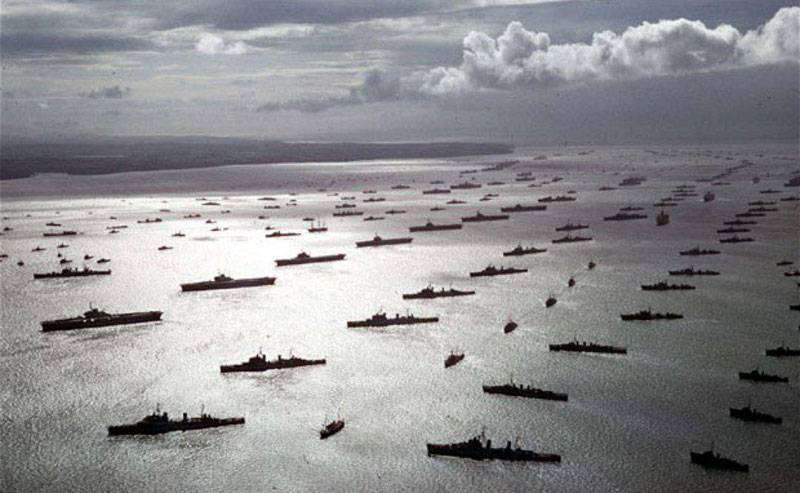
Of this number, 13 battleships, 3 aircraft carriers and almost 40 cruisers were concentrated in the Atlantic alone. True, all this power was dispersed from Greenland to Antarctica, but nonetheless.
In general, the Germans had nothing to oppose to British power, except, perhaps, the tactics used in the First World War. That is, to try to arrange a blockade of the British Isles, making the delivery of everything necessary from the colonies as difficult as possible.
Two ways: submarines and surface ships, since the Germans did not have enough long-range aircraft capable of inflicting real damage. I have already written about the Condors, FW.200, which sank more than one ship with bombs, but there were too few of them to seriously strain Britain.
So the actions of the submarine fleet and surface raiders remained. If the Germans were more or less good with submarines, then everything that could be used in this regard, from a battleship to a passenger liner, was used as surface raiders.
Generally, in stories World War II still leaves many blank spots. Some are simply not of interest, some are simply not left with eyewitness testimonies to our days, but there are some that you can think of. As, for example, the case cited, in which, on the one hand, there is nothing special, and on the other, there is a historical mystery.
February 1941. The German High Command is struggling to complicate the supply to Britain by intercepting Atlantic convoys.
Operation "Nordzeetur" was planned, within which the already familiar "Scharnhorst" and "Gneisenau" were to go to sea with the support of "Hipper" and destroyers. But the Gneisenau was still being repaired after being damaged in a storm in December 1940, but the Scharnhorst was strange. The seemingly intact ship remained in the port, which can be attributed to riddles, because the situation turned out to be strange: the Scharnhorst and Hipper in a pair could have done quite serious things. But in fact, only the Admiral Hipper went into action with an escort from a destroyer and three destroyers.
The cruiser left Brest and went to the Atlantic. The fact that the operation was conceived in a hurry is evidenced by the fact that the Spichern tanker was sent to supply the Hipper with fuel, urgently converted from an ordinary merchant ship and with a crew that, to put it mildly, was not trained in such maneuvers as refueling cruisers in the open ocean.
The cruiser and the tanker met, and the Hipper refueling show lasted for three whole days. This, of course, shows the sailors from "Spichern" not from the best side in terms of training, but the main thing is that the cruiser was fueled and he finally went out hunting.
The plan was very simple: "Hipper" was to "make noise" south of the main convoy routes, at the latitude of Spain and Morocco, in order to divert attention from "Scharnhorst" and "Gneisenau", which, after the completion of the repair of the latter, were supposed to go out north and attack the convoys that from Canada. On the whole, a very good idea, but for such a thing it would be better to send more independent in terms of range "Deutschlands".
"Hipper" during the week diligently pretended to be looking for someone in the south, however, especially trying not to catch the eye of the British. A sort of "ghost cruiser" that was seen everywhere.
On February 10, the news came from the commander of the northern detachment, Admiral Lutyens, who was flying the flag on the Gneisenau, that the battleships had been discovered by the British. The commander of the Hipper, Captain Meisel, decided not to seek adventure on the aft towers and moved southeast, towards the Azores. This turned out to be not only the right one, but a very happy (for the Germans) decision.
The next day, February 11, 1941, the steamer Iceland was unlucky, which lagged behind convoy HG-53. The captain of "Iceland" did not play the hero and during interrogation in the cabin of the captain of the "Hipper" told everything: the route of the convoy, the number of ships, what kind of security.
The security of the convoy was such that the Germans perked up and rushed to catch up. Two destroyers, which were new before the First World War, and an armed trawler that could be called a gunboat - this was not a threat to the Hipper at all.
And the raider at full speed went in the direction indicated by the captain of "Iceland". And then at night the marks of the ships appeared on the radar. Without giving themselves away, the Germans decided to wait until morning to start a battle in the light of the sun.
However, in the morning it turned out that everything is even more beautiful (again from the point of view of the Germans), for they did not come across the convoy HG-53, but on the SLS-64, heading from Freetown. The convoy consisted of 19 ships that crawled at a speed of 8 knots and were not guarded at all!
With the first rays of the sun, the German sailors began to count with surprise the ships of a completely different convoy, which were passing by on a parallel course. Moreover, it did not occur to anyone in the convoy that it was a German raider. "Hipper" was mistaken for "Rhinaun" due to the good work of the German radio operators who broadcast callsigns similar to those of "Rhinaun".
But when it finally dawn, that is, at 6 am, the Germans stopped playing hide and seek, lowered the British flag and opened fire on the almost defenseless ships. Yes, some of the ships in the convoy had some weapons, but what could the 76mm and 102mm cannons do against the Hipper? So they didn't do anything.
Having reached a maximum speed of 31 knots, the Hipper caught up with the convoy and went on a parallel course, opening fire from all her weapons and firing torpedoes from the vehicles on the starboard side. Then, having overtaken the convoy, the cruiser turned around and opened fire from the armament of the left side, emptying the torpedo tubes and the left side. 12 torpedoes are 12 torpedoes. And eight 203-mm guns, twelve 105-mm guns, twelve 37-mm machine guns, ten 20-mm machine guns. And all this was shooting.
According to the gunners' reports, a total of 26 ships were fired upon. The Germans had two senior artillery officers on the Hipper, on the port and starboard sides. The senior artillery officer directed the firing of both calibers, and the chief torpedo operator did the same with regard to his torpedo tubes.
So the figure of 26 targets is not invented, it is clear that some ships received from the Hipper twice, or maybe three times.
The battle, which began at a distance of about 3 miles, turned into a massacre at a distance of 5 cables, and at the very end the distance from the cruiser barrels to the targets was about 2 cables. Even anti-aircraft guns were used.
In such conditions, to sink the transport, it was enough to hit one large-caliber shell in the waterline area. As the results show, the Germans coped with this task.
The main-caliber guns fired in volleys of four guns, in fact, without zeroing, which at such distances was not necessary, each projectile was already flying at the target. During the first hour of the battle, more than 200 main caliber shells were fired. The fire was carried out by high-explosive shells with a head fuse, which was quite effective when firing completely unarmored targets.
Further, the main caliber was fired at the waterline, with the most accurate aiming. 105-mm "station wagons" fired in the same direction, and anti-aircraft guns fired at the bridges and wheelhouses of ships. The 105mm guns fired a reported 760 rounds.
The fired torpedoes also did not miss such a target as a convoy in a dense formation. According to observation data, of the 12 torpedoes fired, 11 hit the target, but one did not explode. 6 ships sank due to being hit by torpedoes.
Naturally, in such conditions it would be reasonable to recharge the devices, but the seas were disturbing. However, an attempt was made to reload the torpedo tubes. Two torpedoes were prepared, but the third miraculously did not fly overboard, falling off the transport cart. They gave the command "the smallest" and at this speed the crews were able to load 2 more torpedoes. True, by that time the battle had already ended.
At 7.40 am, that is, an hour and a half after the start of ... the battle, the SLS-64 convoy ceased to exist as such.
It cannot be said that everything went so smoothly, because such intense firing with the main caliber could not but affect the components and mechanisms of the ship.
In fact, the German artillerymen demonstrated not only the ability to conduct accurate fire (although, okay, everyone knows how to shoot at point-blank range), but also get out of emergency situations.
In turret "A" fuses have blown and the projectile supply system is out of order. While the fuses were changing, the crews fed charges and shells manually.
In tower "B" during the first volleys the tray for supplying shells was out of order. He stopped dropping to the bottom position. While the repairmen were bringing the mechanism to life, the crew fed the shells with the help of mechanical hoists.
The crew of the "C" tower was lucky: they only had a breakdown of the hydraulic breaker and they had to send shells manually during the whole battle.
It was noted in the ship's log that all malfunctions were eliminated "without prejudice to the rate of fire." Which only confirms the good training of the German artillerymen.
In addition to problems with the main caliber guns, we also suffered with the 105 mm universal guns. The fuses were burning, especially those in charge of the circuits of the projectile supply and guidance electric motors. Installations were out of order systematically and regularly, both from shocks when firing main guns and from the effects of powder gases.
In principle, only torpedo tubes were fired without problems.
It is necessary to summarize, but this is where miracles begin.
In general, the massacre that Hipper staged is a record. Moreover, the performance record for a single ship in two world wars.
According to the German side, the crew of the "Admiral Hipper" sank 13 or 14 vessels with a displacement of about 75 tons.
The opinion of the British side is somewhat different.
The British recognized 7 ships sunk:
- "Worlaby" (4876 reg. Tons);
- Westbury (4712 reg. T);
- "Owsvestry Grange" (4684 reg. Tons);
- "Shrewsbury" (4542 reg. Tons);
- "Derrynein" (4896 reg. Tons);
- "Perseus" (5172 reg. T, belonged to Greece);
- "Borgestad" (3924 reg. T, belonged to Norway).
I managed to get to the ports:
- "Lornaston" (4934 reg. T, Britain);
- "Kalliopi" (4965 reg. T, Greece);
- "Aiderby" (4876 reg. T, Britain);
- "Klunparku" (4811 reg. T, Britain);
- "Blayratoll" (4788 reg. T, Britain).
It turns out 12 ships. But in all reports, the number of ships in the convoy is indicated at 19. Where 7 more ships have gone is not clear.
The Germans, of course, consider them (and not without reason) to be sunk.
Actually, here's another list:
- "Volturno";
- "Margot";
- "Poliktor" (Greece);
- "Anna Mazaraki" (Greece).
These ships were gathered around the Margo by Vice Commodore Ivor Price and brought to the port of Funchal in Madeira.
"Varangberg" (Norway) (together with the Greek "Kalliopi") arrived in Gibraltar.
That is, 10 ships (three heavily damaged) survived.
In general, the picture of the SLS-64 convoy turned out to be as follows: 19 ships left Freetown. 7 sank "Hipper", 10 reached ports. 2 more ... No data.
But not 14. That is, there are already 7 and 2.
Although, stopping the carnage and starting a retreat to the north, Meisel wrote in the report: "I decide to interrupt the fight, although six more ships are visible.".
The entry in the ship's log also applies to this time:
And here a logical question arises: why did not Captain Meisel turn the victory into a final and irrevocable one?
I would say this: eternal German caution and reluctance to take risks. This the Germans sinned throughout the war, while the Kriegsmarine fought.
Langsdorf, after a brilliant battle at La Plata, floods the "Admiral Count Spee" and ineptly shoots a bullet in his forehead. Although one could easily resist provocations and scatter the British cruisers.
Lutyens on "Bismarck" did not allow the rudders to be wedged by the explosion, fearing to damage the shafts, and the battleship sank to the bottom with balanced propeller shafts, but to the bottom.
Meisel, obviously, did not differ much from his colleagues, therefore he simply did not show the due determination. Until the very end, he apparently did not believe that the convoy was going without an escort, and therefore constantly expected the appearance of British cruisers. Hence, leaving after an hour and a half of the battle.
In addition, 2/3 of the high-explosive shells and torpedoes in the vehicles were used up, and reloading turned out to be difficult in conditions of rough seas. But torpedoes are not the main thing weapon heavy cruiser. The fact that Meisel decided to leave a third of the high-explosive shells intact is normal. The appearance of British destroyers or light cruisers could make life very difficult for the Hipper, since firing armor-piercing and semi-armor-piercing shells at lightly armored ships is not the best way out.
But in this case, the heavy cruiser has very clearly demonstrated what it can do when used as a raider. And, it should be noted, demonstrated more than excellent.
High speed, powerful armament - these were definitely the cruiser's strengths. That's why he is a cruiser, all the more heavy. However, there were also disadvantages in the form of a short range and hence the constant need for refueling.
The expenditure of shells was also high: 247 shells with a caliber of 203 mm and 760 shells of 105 mm plus 12 torpedoes for seven sunken ships - this is a bit too much.
Apparently, this is precisely why the "Admiral Hipper" was not used constantly as a raider.
In general, it is the commander of the Hipper who is fully responsible for the current confusion. It is clear that Meisel was constantly waiting for the escort ships, with which he would also have to fight. Therefore, the Veda cruiser is a rather chaotic shelling, especially since both sides fired at different times.
So the Hipper maneuvered at high speed, covered and struck ships, which also maneuvered, trying to get away from the cruiser. Some fell under fire more than once, which, in fact, allowed Meisel to record the sinking of 13 ships.
But even such a result as the sinking of 7 ships and the sending to the bottom of more than 50 tons of cargo needed by the British is already an achievement. So the Hipper team's actions were quite good.
And the last question. The most interesting. How did it happen that the British fleet, numbering so many ships, could not provide a pair of destroyers to defend the convoy? Yes, they would not have done the weather, but torpedoes and smoke screens could already be a good help against the Hipper.
Raider is an interesting concept. As well as its application. If wisely, this guarantees inflicting enormous damage on the enemy.
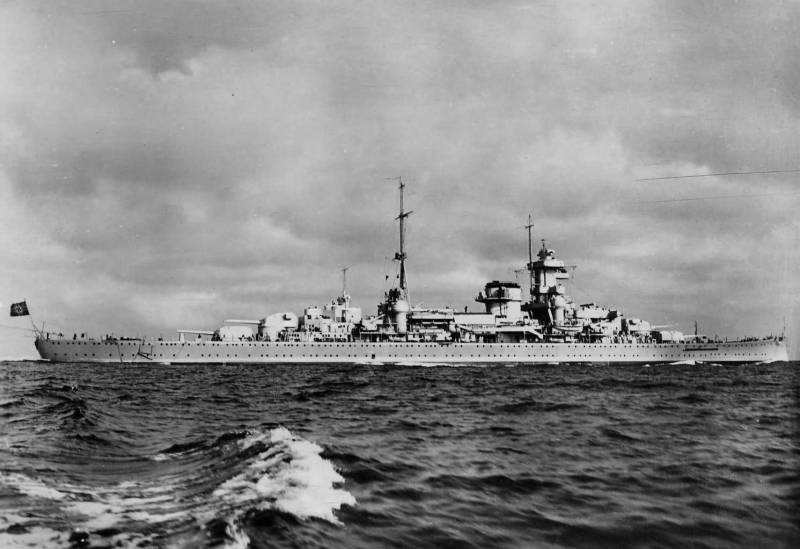
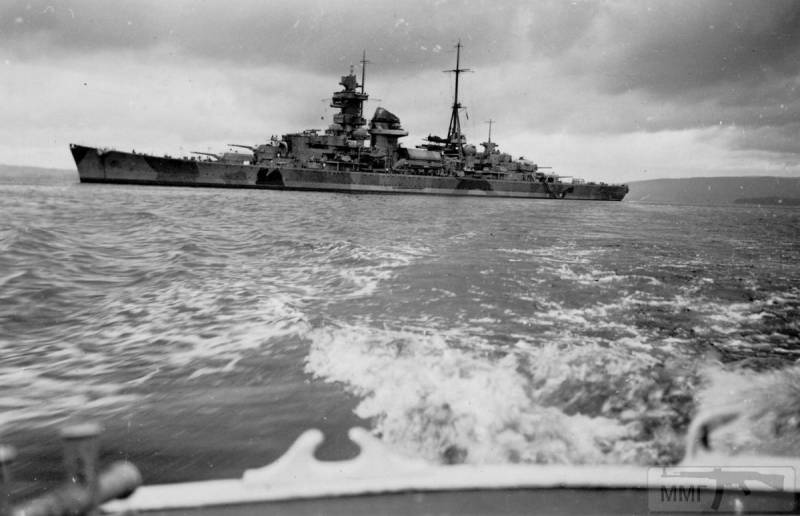
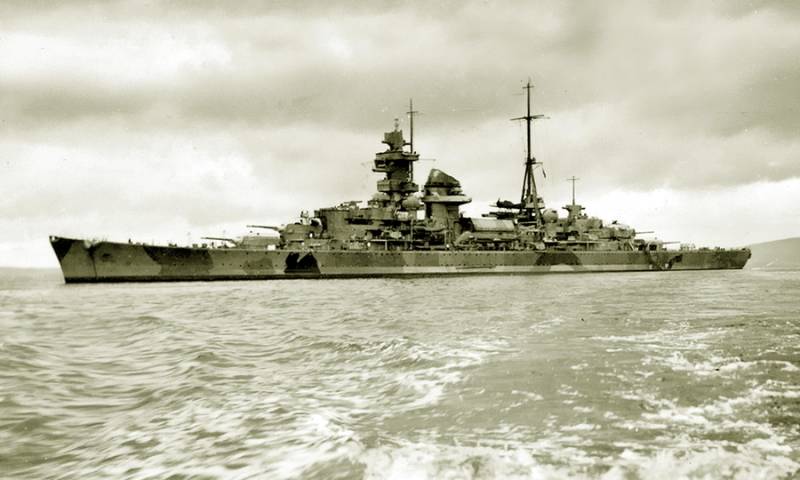
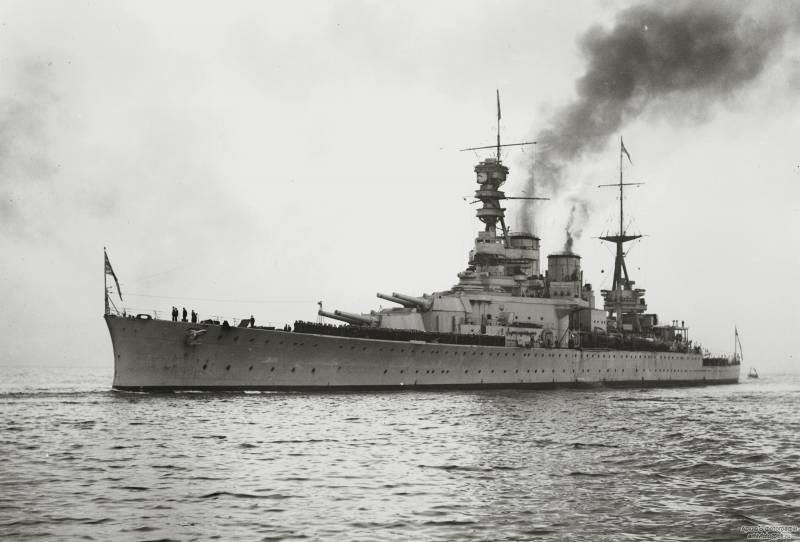
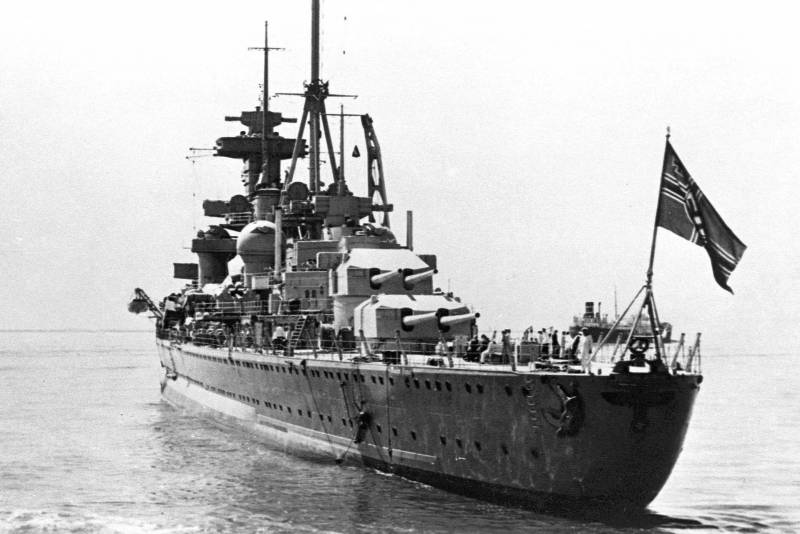
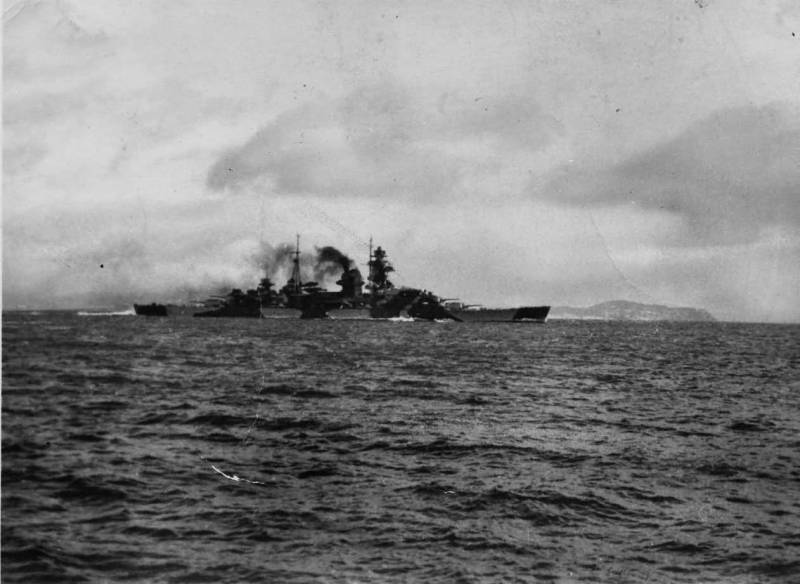
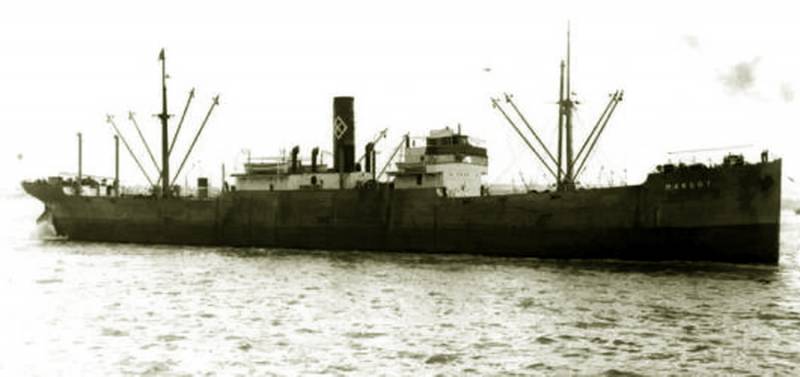
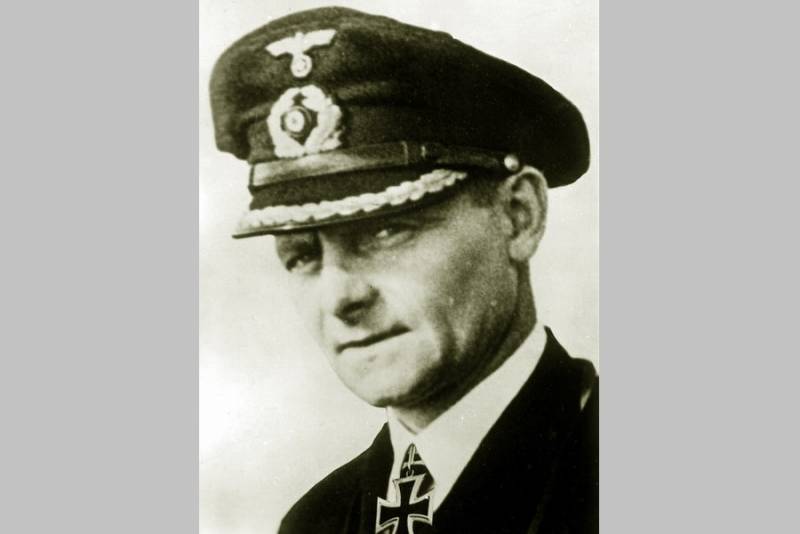
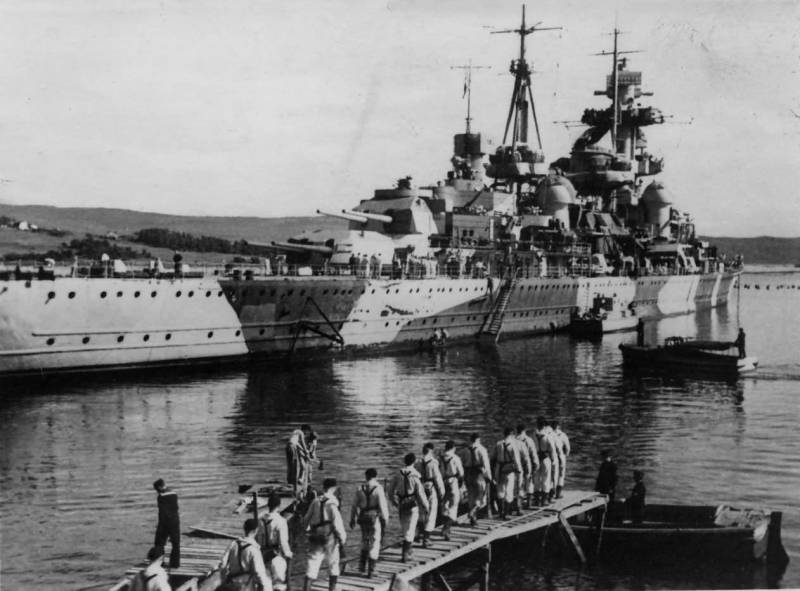
Information